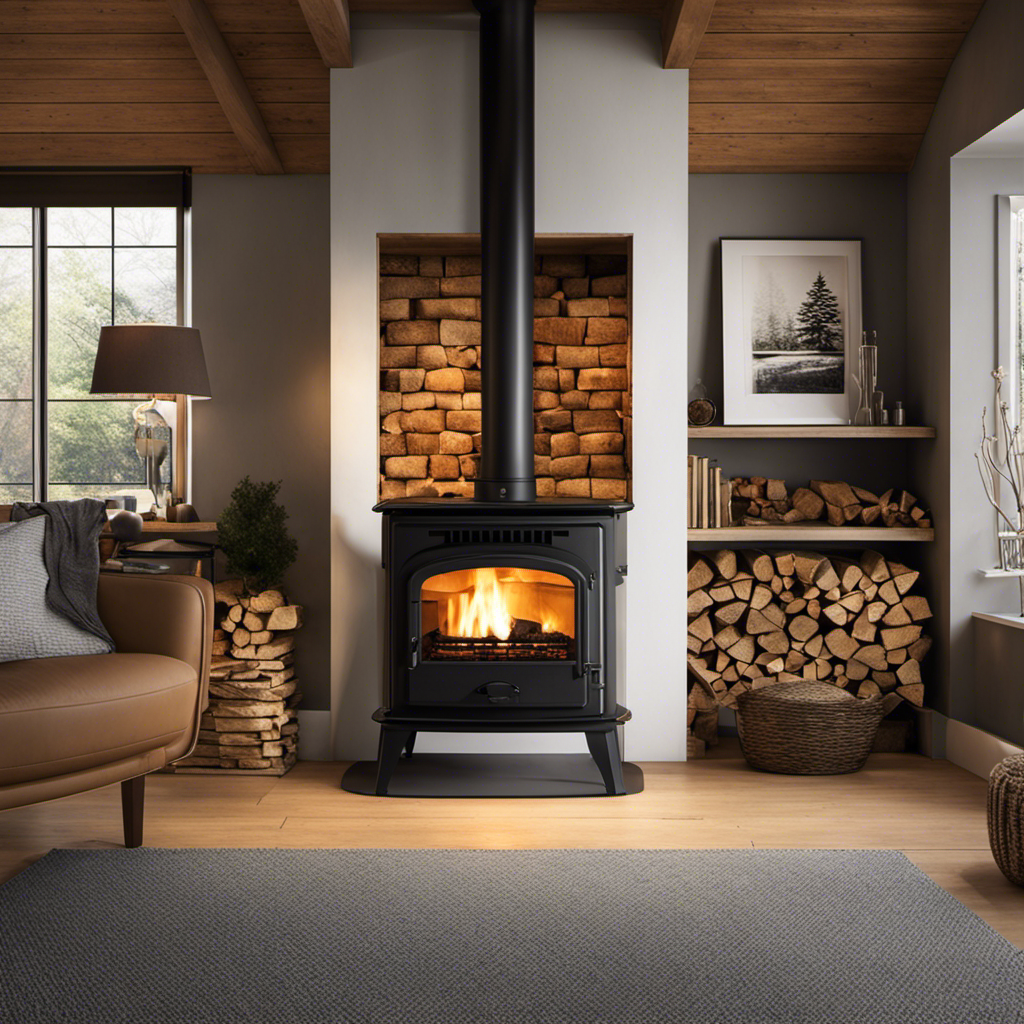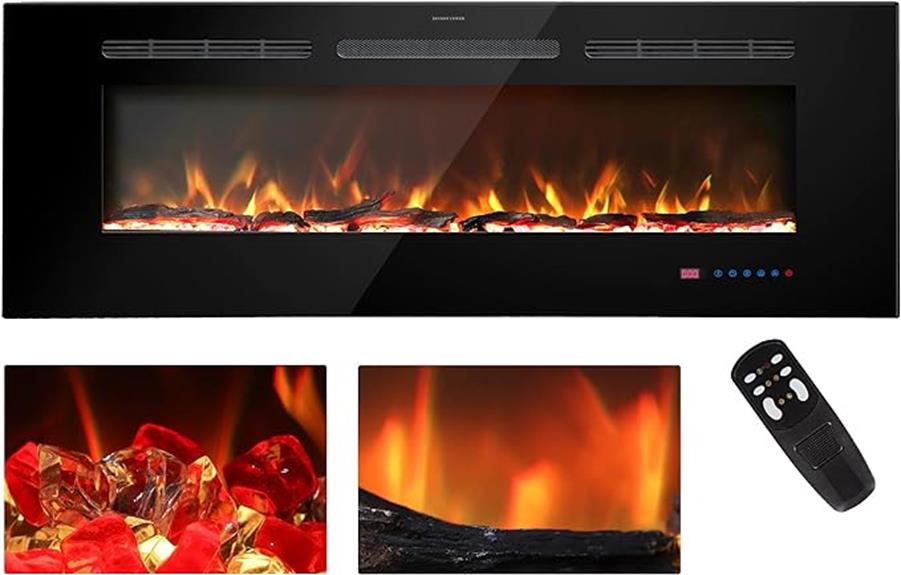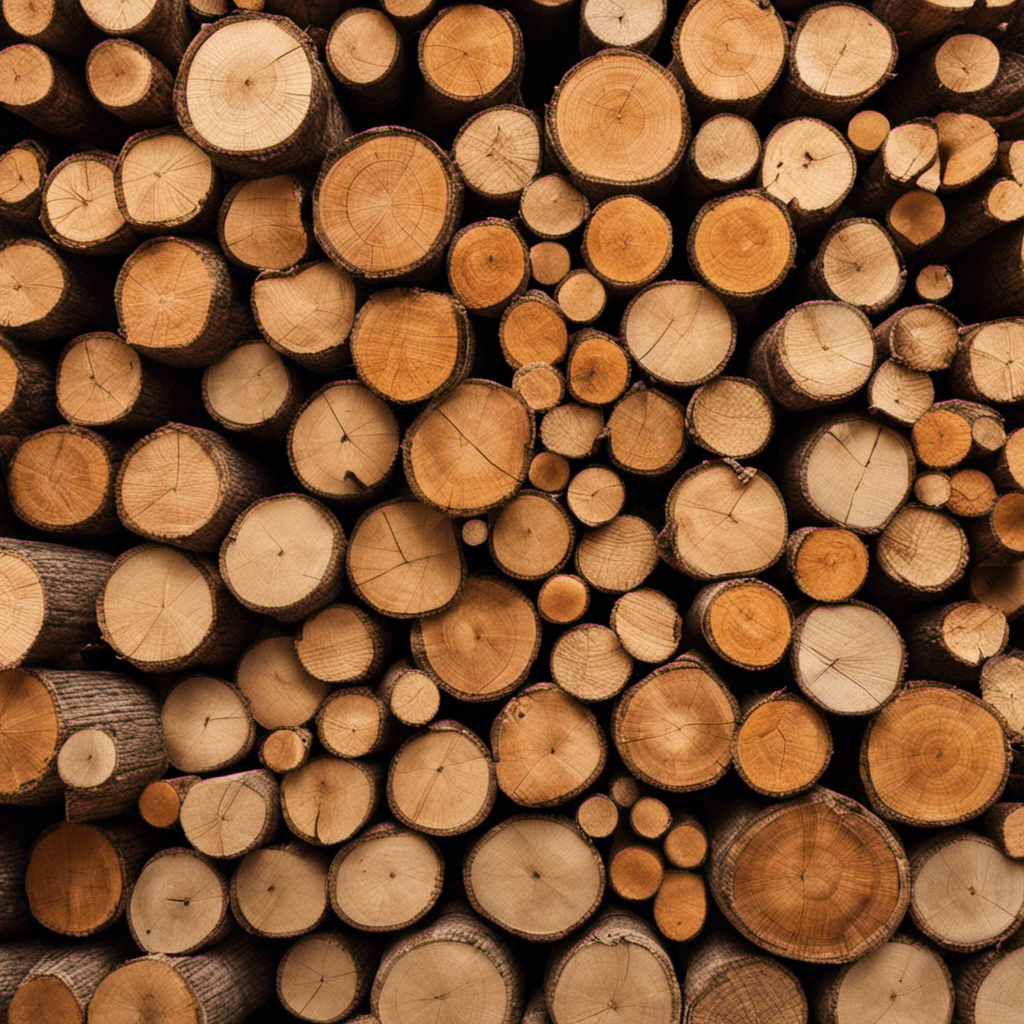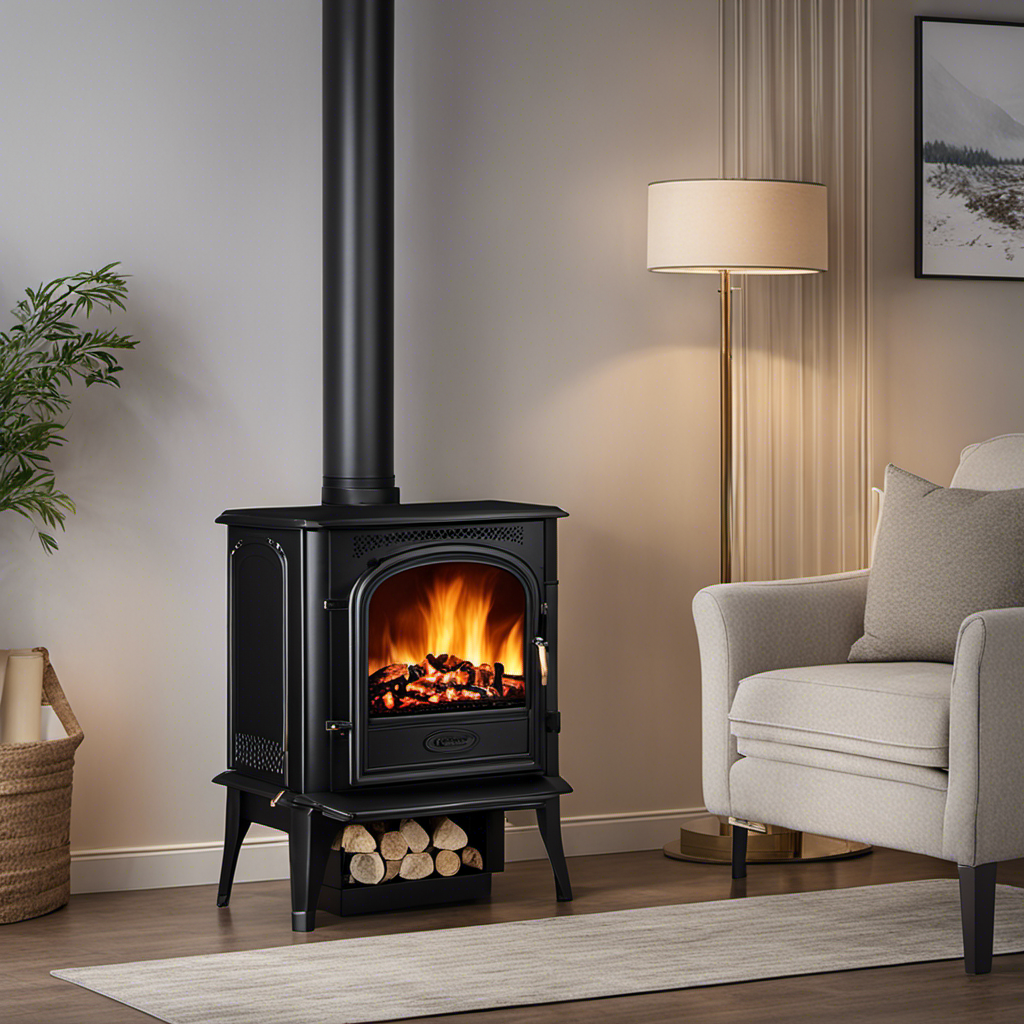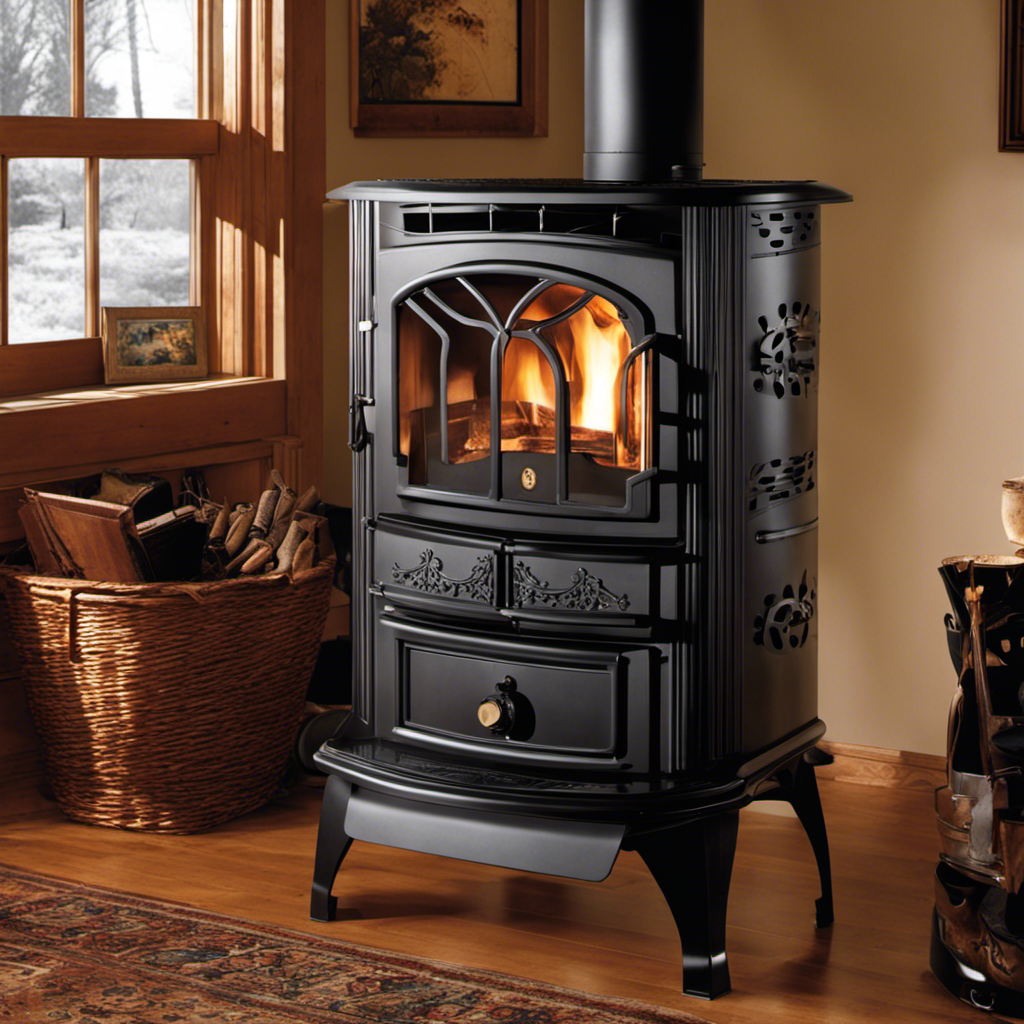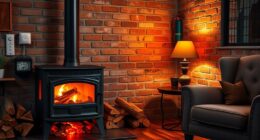I have been contemplating purchasing a wood pellet stove for my home to effectively warm my small living area, which is under 1000 square feet. However, I am unsure about what size stove would best suit my needs.
In this article, I’ll provide you with all the information you need to calculate the ideal size of a wood pellet stove for a small area. By exploring key factors and sizing guidelines, we’ll make sure you choose the perfect stove for your heating needs.
Key Takeaways
- Wood pellet stoves are energy efficient appliances that burn compressed wood pellets, providing sustainable and renewable heat for small spaces.
- To calculate the ideal size of a wood pellet stove for less than 1000 sq feet, multiply the square footage by the heating factor (ranging from 25 to 35 BTU per square foot) to determine the BTU per hour needed.
- Consider factors such as insulation, climate, and desired temperature when choosing a stove size, and compare different stoves’ heating capacities, efficiency, and heating costs.
- When choosing a wood pellet stove for a small area, assess the heating capacity, measure the available space, consider design and aesthetics, and take into account insulation and other heating sources.
Understanding the Heating Requirements for Small Spaces
If you’re looking to heat less than 1000 sq feet, it’s important to understand the heating requirements for small spaces.
When it comes to heating options, there are several energy efficient appliances to consider. One popular choice is a wood pellet stove. These stoves burn compressed wood pellets, which are a sustainable and renewable source of fuel. They offer efficient heat output and can be controlled easily.
Wood pellet stoves are known for their ability to evenly distribute heat throughout a small space, making them ideal for heating less than 1000 sq feet. However, it’s crucial to calculate the ideal size of the stove to ensure optimal heating. By considering factors such as insulation, climate, and desired temperature, you can determine the perfect size for your space without wasting energy or money.
Calculating the Ideal Size of a Wood Pellet Stove for Less Than 1000 Sq Feet
To properly heat an area under 1000 sq feet, you should calculate the ideal size of a wood pellet stove. The size of the stove you need depends on the efficiency and heating capacity required for your space.
One way to determine the size is by calculating the BTU (British Thermal Unit) per hour needed to heat your area. The formula is simple: multiply the square footage by the heating factor. The heating factor can range from 25 to 35 BTU per square foot, depending on the insulation and climate.
Once you have the BTU per hour, you can compare different stoves and their heating capacities to find the right fit for your needs. By calculating efficiency and comparing heating costs, you can ensure that your wood pellet stove is the perfect size for your small space.
In addition to size, there are key factors to consider when choosing a wood pellet stove for a small area.
Key Factors to Consider When Choosing a Wood Pellet Stove for a Small Area
When choosing a wood pellet stove for your small area, there are key factors you should consider.
First, you need to assess the heating capacity of the stove. Make sure it is suitable for the size of your space, taking into account any insulation or other heating sources.
Next, consider your space constraints. Measure the available area and ensure the stove will fit comfortably without obstructing walkways or furniture placement.
Additionally, think about the overall design and aesthetics of the stove to ensure it complements your space.
Now, let’s explore the BTU output and efficiency ratings for compact wood pellet stoves, as these factors will further inform your decision-making process.
Exploring the BTU Output and Efficiency Ratings for Compact Wood Pellet Stoves
Exploring the BTU output and efficiency ratings can help inform your decision when choosing a compact wood pellet stove for a small area. Evaluating the cost effectiveness of wood pellet stoves for small spaces and comparing their performance with other heating options for compact areas is crucial. Here are four key points to consider:
-
BTU Output: Look for a stove with an appropriate BTU output for your space. A higher BTU output means more heat generated, but it also consumes more pellets.
-
Efficiency Ratings: Consider the stove’s efficiency rating, which indicates how effectively it converts pellets into heat. Higher efficiency means less waste and lower fuel costs.
-
Cost Effectiveness: Calculate the cost of pellets and compare it to other fuel sources to determine the long-term cost effectiveness of a wood pellet stove.
-
Performance Comparison: Compare the performance of wood pellet stoves with other heating options like electric or propane heaters, considering factors such as ease of use, heat distribution, and environmental impact.
Understanding these factors will help you make an informed decision about the best wood pellet stove for your small space.
Now, let’s move on to sizing guidelines for selecting the perfect wood pellet stove for heating a small space.
Sizing Guidelines for Selecting the Perfect Wood Pellet Stove for Heating a Small Space
Determining the appropriate size of a wood pellet stove for a small area can ensure efficient heating without wasting energy.
When it comes to sizing considerations, there are a few factors to keep in mind. First, you need to calculate the square footage of the space you want to heat. For areas under 1000 square feet, a stove with a heating capacity of 25,000 to 35,000 BTUs should suffice.
Additionally, consider the insulation and layout of the room, as these can affect heat distribution.
As for installation options, wood pellet stoves can be freestanding or insert models. Freestanding stoves offer flexibility in terms of placement, while insert models can fit into existing fireplaces.
Remember to consult with a professional to ensure proper sizing and installation for your specific needs.
Can the Size of the Wood Pellet Stove Affect its Efficiency in Burning Pellets?
The size of the wood pellet stove can impact its efficiency in burning pellets. When troubleshooting wood pellet stove burning, consider how the stove’s size affects heat output and fuel consumption. A properly sized stove will burn pellets efficiently, providing optimal heat and minimizing wasted fuel.
What Size Wood Pellet Stove Do I Need if I Can’t Burn Wood in It?
When choosing a wood pellet stove for a location where burning wood in a pellet stove is prohibited, consider a size that fits the space and meets your heating needs. Look for a model with a high efficiency rating to maximize heat output while complying with regulations.
Frequently Asked Questions
Are Wood Pellet Stoves Safe to Use in Small Spaces?
Wood pellet stoves are safe to use in small spaces. They provide efficient heat and can be cost-effective. However, when determining the appropriate size, consider the square footage, insulation, and climate to ensure optimal heating.
Can Wood Pellet Stoves Be Used as the Primary Heating Source for a Small Area?
Can wood pellet stoves save money on heating bills? How do they compare to other heating options in terms of efficiency? As the primary heating source for a small area, wood pellet stoves are efficient and cost-effective.
Do Wood Pellet Stoves Require a Chimney or Venting System?
Wood pellet stoves typically require a chimney or venting system for proper operation. However, there are ventless options available that can be used as alternative heating methods for spaces less than 1000 sq feet.
How Often Do Wood Pellet Stoves Need to Be Cleaned and Maintained?
When it comes to cleaning and maintaining wood pellet stoves, it’s important to consider the frequency and procedures. Regular cleaning helps ensure optimal performance and extends the lifespan of the stove.
Are There Any Environmental Benefits to Using a Wood Pellet Stove in a Small Space?
There are environmental benefits to using a wood pellet stove in a small space. Compared to traditional heating methods, pellet stoves produce fewer emissions and have a lower carbon footprint. Additionally, the cost of wood pellets is often lower than other fuel sources.
Conclusion
In conclusion, when choosing a wood pellet stove for heating a small space of less than 1000 square feet, it is important to consider the heating requirements, calculate the ideal size, and take into account factors such as BTU output and efficiency ratings.
According to a study conducted by the U.S. Department of Energy, wood pellet stoves can be up to 90% efficient, meaning they effectively convert fuel into heat. This statistic highlights the energy-saving potential of wood pellet stoves, making them a smart choice for efficient and cost-effective heating in small areas.
Logan’s affair with adventure began in childhood. He hailed from a small town where vast forests bordered one side and endless shores stretched on the other. His days were spent exploring uncharted woods, climbing tall trees, or listening to the tales of old sailors. This early immersion in a world brimming with stories and mysteries became the foundation of his passion for writing.

